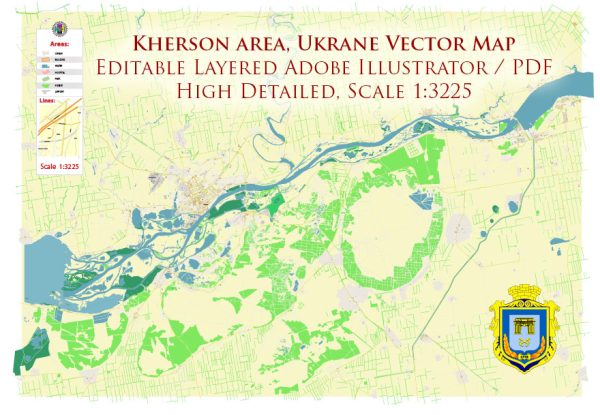Kherson, located in southern Ukraine, has a rich history that spans several centuries. Here’s a brief overview of its historical development:
- Foundation and Early History:
- Kherson was founded in 1778 by Prince Grigory Potemkin, a military leader and statesman in the Russian Empire. It was established on the site of a small Cossack fort and quickly became an important port and military center.
- Imperial Russia:
- Throughout the late 18th and 19th centuries, Kherson was a vital part of the Russian Empire. It played a significant role in Russia’s expansion into the Black Sea region, serving as a key naval base and trading port.
- Economy and Growth:
- The city’s growth was closely tied to its strategic location on the Black Sea and the Dnieper River, which facilitated trade and commerce.
- Kherson’s economy developed around agriculture, shipbuilding, and trade, and it was a major grain-exporting city.
- The Soviet Era:
- After the Russian Revolution of 1917, Kherson became part of the Ukrainian Soviet Socialist Republic. It continued to be an important port and industrial city during the Soviet period.
- World War II:
- During World War II, Kherson was occupied by Nazi Germany from 1941 to 1944. The city suffered significant damage during the war, and its Jewish population was tragically decimated.
- Post-Soviet Ukraine:
- Following the collapse of the Soviet Union in 1991, Kherson became part of an independent Ukraine. It faced various economic and social challenges during the transition to a market-oriented economy.
- Modern Times:
- Today, Kherson is known for its agricultural and industrial sectors, including the production of machinery, shipbuilding, and food processing.
- It remains an important transportation hub with its river and sea ports.
Kherson’s history is marked by its strategic location and role as a center of trade and industry. It has also been influenced by various political changes, from Imperial Russia to Soviet Ukraine and finally to an independent Ukraine. The city has preserved some historical architecture and landmarks, reflecting its diverse heritage and role in the region’s development.


 Author: Kirill Shrayber, Ph.D.
Author: Kirill Shrayber, Ph.D.